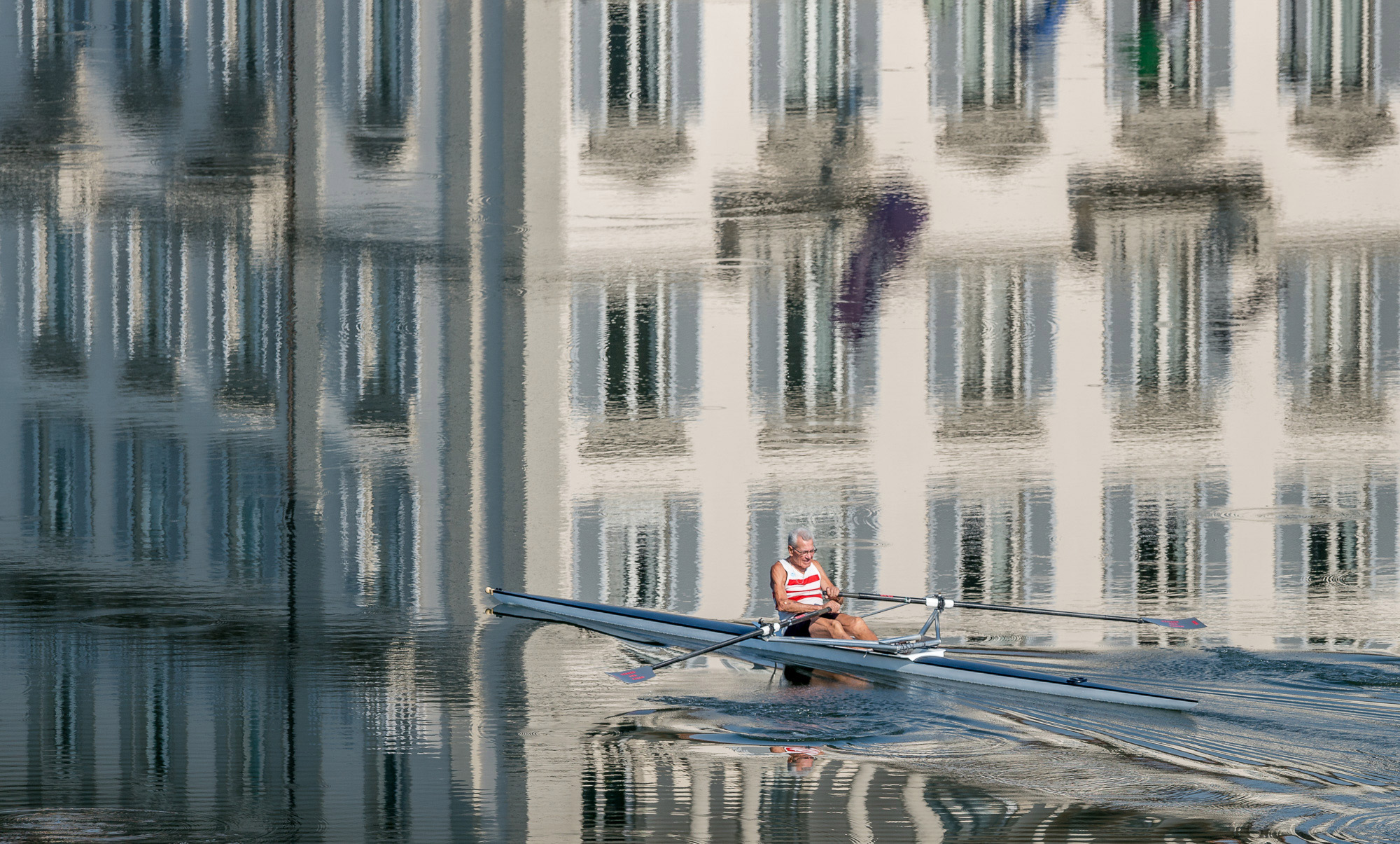Not Such A Well Kept Secret


Anyone who reads this site regularly knows how much I like my Fuji cameras. Right now, I own the XT-2, X-Pro 2, and 100F, and a good-size stable of zooms and prime lenses. It should be quite obvious that I am a mirrorless advocate. The Fuji line has been something I can really get behind, not only because it delivers, but because of how it delivers.
Since introducing the original X-Pro, and just a few lenses, Fuji has been an incredibly transparent company. They released a very aggressive lens roadmap years ago, delivering on their promises while adding even more. Fuji also gets super high marks for continually upgrading the capabilities of their cameras by releasing major firmware updates. Many of these updates add so many new features, it is like getting a new camera.


On Thursday, Feb. 15, 2018, Fuji announced the NEW X-H1. Once again, the company has listened to customers, retaining the things that worked while adding the most-requested features.
The X-H1 is probably the worst-kept secret I have seen in recent years for a camera launch. Back in October, I got to see an early model, and since then I have been excited about its release. Like many content writers, I sign a lot of non-disclosure agreements preventing me from speaking or writing about these products until the embargo date arrives. Well, everything about this camera started appearing months ago, and in the last few weeks, pictures and specs were leaked on rumor sites and the internet. It seems someone didn’t read their NDA.


I am in Los Angeles for the official press launch, and with this beautiful camera, Fuji has again hit it out of the park. My order already has already been placed, and when I receive it, I’ll give it a good field testing. Thank heavens I have a wide range of lenses for this camera. I intend to really put it to the test, especially the new video features.


The Specs
- 24.3MP X-Trans CMOS III Sensor with primary color filter and X-Processor Pro Processor
- 5-axis 5.5 stops in-body image stabilization
- High-precision 0.5 inch, approx. 3.69 million dots OLED Color Viewfinder
- Weather-resistant design; ability to operate in temperatures as low as 14°F/-10°C
- ISO Sensitivity
- Standard output: AUTO1 / AUTO2 / AUTO3 (up to ISO12800) / ISO200~12800 (1/3 step)
- Extended output: ISO100/125/160/25600/51200
- LCD Monitor
- 3.0 inch, aspect ratio 3:2, approx. 1.04 million dots touch screen color LCD monitor(approx. 100% coverage)
- Continuous Shooting
- 14.0 fps (with the Electronic Shutter), 8.0 fps (with the Mechanical Shutter)
- 11.0 fps (with the Mechanical Shutter and when fitted with VPB-XH1)
- Movie Recording (using a card with the UHS Speed Class 3 or higher)
- [4K (4096×2160)] 24P / 23.98P up to approx. 15min.
- [4K (3840×2160)] 29.97P / 25P / 24P / 23.98P up to approx. 15min.
- [Full HD (1920×1080)] 59.94P / 50P / 29.97P / 25P / 24P / 23.98P up to approx. 20min.
- [HD (1280×720)] 59.94P / 50P / 29.97P / 25P / 24P / 23.98P up to approx. 30min.
- Bluetooth® Ver. 4.0 low energy technology
- New ETERNA film simulation mode
- Simulates cinematic film, understated colors and rich shadow tones
- New Flicker Reduction Mode
- Provides stable exposure during burst shots even under fluorescent and mercury lighting
- Advanced filters and Film Simulations, including ACROS
- Accessories included:
- Li-ion battery NP-W126S
- Battery charger BC-W126
- Shoe-mount flash unit EF-X8
- Shoulder strap, Body cap, Strap clip, Protective cover, Clip attaching tool, Hot shoe cover, Vertical Power Booster Grip connector cover, Sync terminal cover, Cable Protector, Owner’s manual
More Details


The X-H1 is a big step for Fuji, and one of the major new features is the IBIS (In Body Image Stabilization). The 5.5 stop feature is the same spec as the Sony a7r III. It uses three axial accelerometers, three axial Gyro sensors, and a specially-developed dual-processor to achieve approximately 10,000 calculations per second. In addition, a new spring mechanism has been added to reduce micro-vibrations caused by operation of the mechanical shutter. Don’t forget, you can use the Electronic Shutter feature for complete vibration-free shooting.


The X-H1 is a bit larger than the XT-2, and has a number of additions to the camera body. There is a larger grip, near-silent shutter sound, a focus level, AF-On rear button, a leaf-spring switch for the shutter release button, and a new 1.28 inch LCD top status screen.
Something I have enjoyed with Fuji cameras is the blending of technology with the legacy concept of camera design. By this, I mean that if you looked down on the camera from above, you can see f/stop, shutter and ISO settings. You can also select the shooting mode and metering mode. With the X-H1, this information also appears on a new LCD screen on the top. This LCD screenshot is customizable, as are many features on the X-H1.


Fuji claims this is a dust- and water-resistant camera, which for photographers such as myself, is important. They state that the camera is sealed at over 100 different points. They put a new, heavier duty lens mount on this camera, too. The electronic viewfinder is top of the class for an APS-C camera. It conveys a beautiful, almost reflex-like, image. There are 3.69 million dots in the display with a refresh rate of 100 frames per second.
I love the rear tilt screen on this camera, too. It is a three-inch touchscreen that tilts horizontally and vertically. You cannot fully appreciate the vertical tilt screen until you use it. I’m getting older, and it hurts to lay down on the ground to capture a shot. Now I use the tilt screen, and put the camera close to the ground but don’t have to be on the ground to see the frame of composition. I am surprised that others manufacturers have not copied this feature.


For me, I would add the Vertical Power Booster Grip. This is an option, but can also be ordered as a kit. It makes shooting vertically very easy, and allows two extra batteries. This feature comes in very handy for video and high-frame-rate shooting.
The Big Change Is Video
These days, all camera companies are enhancing the video capabilities of their products, and Fuji is no exception.
The X-H1 is the first camera in the X Series to include ETERNA, a new film simulation mode that is ideal for shooting movies. This mode simulates cinematic film, creating understated colors and rich shadow tones, greatly enhancing creative freedom during post-processing. The X-H1 boasts many functional and performance improvements to video image quality, including the 1080/120P high-speed video mode (1/2, 1/4 and 1/5 speed slow motion) for recording spectacular slow-motion footage; F-log SD card recording which aids smooth workflow; a DCI 4K shooting mode (4096×2160); a 400 percent dynamic range setting (approximately 12 stops); 200 Mbps high-bit rate recording; a high-sound quality internal microphone (24 bit/48 kHz); and verbal time codes.
I’ll be honest, except for a few instances I have not used any of my Fuji cameras to do video. With this new camera, that may change. What I have seen (but not used myself) is a well-thought-out set of video features with 4K and high speed (slow motion) capture. When we get our camera, I’ll have Michael and Chris give this a run for its money. We will include samples in our full review.
Add The Glass


Coming out of the gate back in 2011, Fuji introduced their first set of lenses. What photographers liked was the size, feel, and especially the image quality. To this day, that remains the same. Many of their lenses have f-stop rings and really fit well with the cameras. The optical quality of these lenses is amazing. Even the zoom lenses have been touted as excellent. I have 10 Fuji lenses in my system, and even though I use certain lenses more than others, I have never been disappointed.
It is worth noting that Fuji announced two NEW cine lenses this week. The MKX 18-55mm, and the MKX 50-135mm. These are true cine lenses, and they speak volumes about Fuji’s commitment to the video side of things.
I tried these lenses out at the press event. I found them buttery smooth in operation with a lot of advantages over still lenses if you are looking to do high-quality video. We will explore these lenses for video when we have some finished products.


Menus Done Right


Recently, I produced what I hope was a helpful video on the Sony Menus. As we all know, menus are a very weak point with Sony camera systems. The functionality is there for Sony cameras, but accessing these functions can be quite daunting. Not so for the Fuji menu system. While I may do a video on the Fuji X-H1 camera, it will be more for fun than as a resource for users.
Fuji has one of the easiest and best menu systems. It is even better with the new camera. It is easy to follow and understand. There are great graphics and illustrations, especially when working to customize buttons and displays. These features enable users to extensively customize their Fuji camera for their needs.
Hands On


I have had the chance to hold and use the X-H1, and expect a production unit in the next few weeks at which time I’ll really get into some heavy shooting with it. Frankly, I can’t wait.
The first impression when you pick it up is how heavy it is compared to the XT-2. I was comparing this to XT-2 as well as the X-H1 both with a Fuji 16-55mm. Fuji touts that they made this camera twice as strong as the XT-2. The X-H1 has a large front grip on it and this grip has the shutter release button as well as a button that activates exposure compensation. The look of this set up is like that of Sony cameras. The on-off switch is located there as well. In my hand, it felt really nice and I liked it better than the XT-2 where you have to reach your finger up to press the shutter. As you will note in the photos on my XT-2, I have a soft-release button attached. On the X-H1, the shutter button feels like something I have never experienced before. It is so light to the touch. It has a tactile feel, unlike any other shutter release I have used. Very nice.




An LCD display screen is on top of the camera where the shutter release and exposure compensation dials were located. This is a direct influence of the GFX camera, and it works here. I have always liked Fuji cameras because you could look down at the top of the camera and see everything – shutter speed, f/stop, ISO, battery status and shooting and exposure modes. This model adds more info that was previously only displayed on the rear screen. The LCD screen also shows the status of the storage cards, shoot mode, metering mode, and more. This is a completely user-customizable display, too. In video mode, it shows minutes left for capture on the cards. I like it, and it is well implemented.


The rear of the camera has a very large area for your thumb to rest without hitting any buttons. You first notice the lack of buttons. This is because many of the functions are all set from the top of the camera. The Q button was moved to the top right on the back. They added (yippee) a rear-focus button. This is next to the AE-L button. Below that is the joystick for moving the focus points.
I tried this out, and ergonomically it is great. I could hit the Q button when needed, use the joystick, and read focus very easily so I knew what buttons I was hitting. This is yet another feature you can tell had a lot of thought put into it.
As I mentioned earlier, the rear screen itself is a touch screen and it flips out horizontally as well as vertically.
The power booster grip, in my opinion, is a “must have,” and I ordered it as part of the kit for my camera. It feels good in the hand, and has all the needed buttons on it to make shooting vertically a real breeze.
Overall, as far as the feel and operation of the camera, I give Fuji high marks. After a short time with the camera, I am even more eager to shoot with it. I wouldn’t expect image quality to change that much since it is the same sensor.
I sat down with the Fuji team, and came to understand the IBIS better, but I didn’t try it. However, I tried it with the camera that I had access to and it was great. They are claiming some pretty impressive numbers as far as low shooting speeds, and they showed some amazing examples. I joked with them saying this could be a tripod killer; some of the examples were tack sharp at a 1/8th of a second, handheld.
I should mention that the IBIS is smart and works in conjunction with lenses that have IOS in them already. In these cases, the lens handles part of the IS, and the body others. I have to admit, I didn’t ask if the whole IBIS comes on when the lens IS is switched off. This is something we will test when the camera is released.
Final Thoughts


The Fuji X-H1 is a winner, and I wouldn’t have expected any less. In real use, it’s the little things that matter, so I’ll need to shoot with it in real life to give the final grade. I still have questions about things like histogram, AF speed and accuracy, and the kinds of things that can only be measured in real-life shooting.
The Fuji tech guys explained changes in the AF system, and the X-H1 should have faster and more accurate AF, especially in CF modes. I’ll share details on that, along with my experience, in the hands-on review.
There is no question that the bulk of this camera’s features focus on video. Fuji has been on the sidelines in this area for a long time, and now they are entering the game. I talked to a number of Fuji shooters at the press event, and they really weren’t interested in the video. But these were still shooters. Fuji must develop its customer base for video. At Luminous-Landscape, we use the Panasonic GH5 as our main camera, and sometimes Sony. From what I hear, the GH5 is hard to beat on the specs. However, I may find the video enhancements good when out shooting still photography and suddenly finding myself wanting to shoot a video clip. Once again, I’ll try this out when we have our production unit.
The bottom line is: this looks like a camera done right. The price is not bad at $1,899.95 (US). The kit I ordered with vertical power boost grip is $2,199.95 (US). You can pre-order now from B&H as well as Amazon. Shipments begin March 1.
I can’t wait!
















